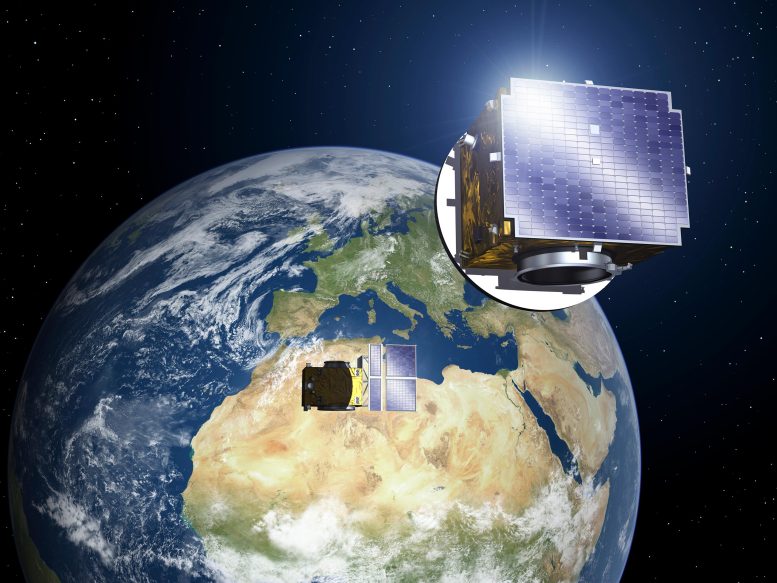
Proba-3’s pair of satellites will be in a highly elliptical orbit around Earth, performing formation flying maneuvers as well as scientific studies of the solar corona. The occulter satellite will have solar panels on its Sun-facing side. Credit: ESA – P. Carril, 2013
ESA’s Proba-3 mission features two satellites working in tandem to observe the Sun’s atmosphere like never before. Launching in September, this mission uses innovative technology to reduce light diffraction, enhancing solar observation capabilities. Scientists will test Proba-3’s instruments during an upcoming solar eclipse.
Through exquisite, millimeter-scale, formation flying, the dual satellites making up ESA’s Proba-3 will accomplish what was previously a space mission impossible: cast a precisely held shadow from one platform to the other, in the process blocking out the fiery Sun to observe its ghostly surrounding atmosphere on a prolonged basis.
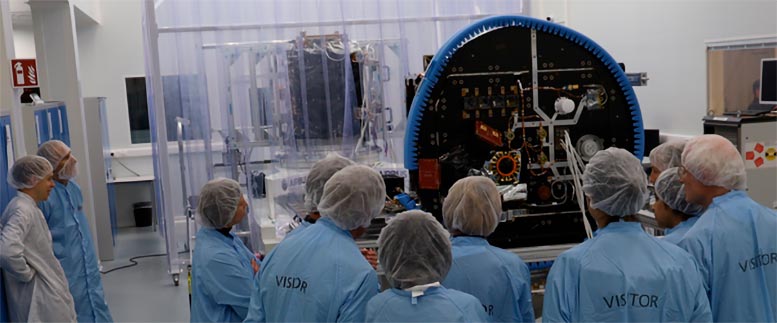
Members of Proba-3’s Science Working Group paid a visit to the actual satellites at Redwire near Antwerp in November 2023. Credit: ESA-J. Versluys
Proba-3: Pre-Launch Preparations
Ahead of the Proba-3 pair launching together later this year, the scientists who will make use of Proba-3 observations were able to see the satellites with their own eyes. Members of this team will test hardware developed for the mission during an actual terrestrial solar eclipse over Northern America next April.
The two satellites are currently undergoing final integration in the premises of Redwire near Antwerp in Belgium. They were paid a visit by the Proba-3 Science Working Team, a 45-strong group of solar physicists coming from all across Europe and the wider world.
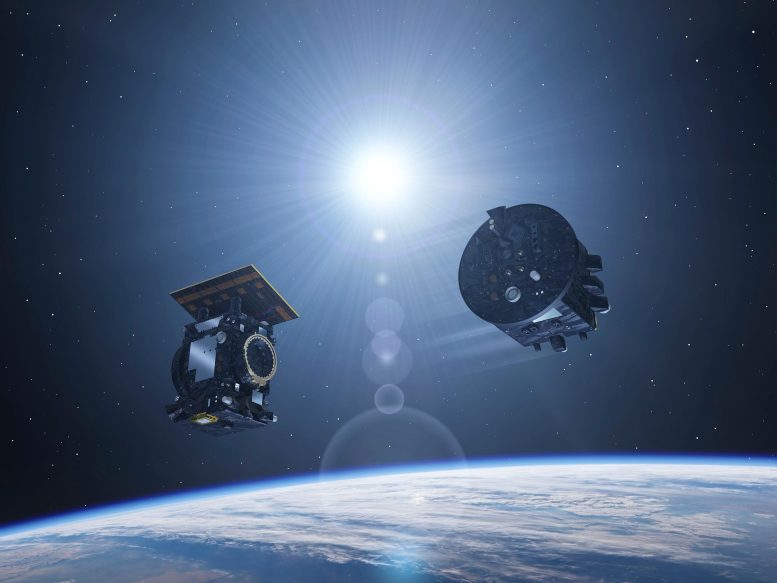
ESA’s double-satellite Proba-3 mission will be flying where no previous member of the Proba minisatellite family has gone before – up to 60 000 km away, a seventh of the way to the Moon. Set for launch in 2024, the two satellites will be launched together into a highly elliptical orbit, ranging from 600 km up to a high point of 60 000 km. For six hours per 19.5 hour orbit, the pair will line up so that the Occulter spacecraft casts a shadow upon the Coronagraph spacecraft to open up the Sun’s corona atmosphere for sustained observation. Credit: ESA-P. Carril
Many of these experts are regular visitors to terrestrial solar eclipse around the globe but are looking forward to the new perspective Proba-3 will open up on the faint solar corona. This mysterious region is important as the place where coronal mass ejections are created – vast eruptions of charged particles that trigger solar storms – as well as influencing the velocity of the solar wind, which is central to determining space weather.
Innovative Design and Technology
“The satellite hardware was quite something in close up,” explains Joe Zender, ESA’s Proba-3 project scientist. “I was particularly struck by how close the camera head on the Coronagraph spacecraft is to the solar array, less than a meter away. While the array relies on high solar illumination, the camera has to remain in complete darkness, with no stray light whatsoever. It really brings it home how precisely that small shadow cast by the Occulter will need to be maintained in place. We also got a peek at the carefully machined edge of the Occulter spacecraft’s disc – normally kept under protective cover before launch. The curve of this edge has been specially designed to minimize any spillover of diffracted sunlight that would otherwise impact imaging performance.”
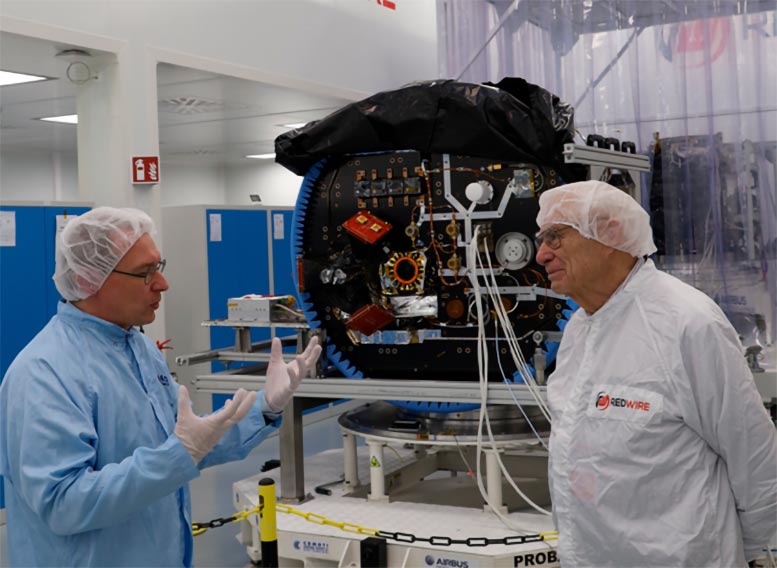
Proba-3 payload manager Jorg Versluys discusses the mission with eminent solar scientist Russ Howard during the visit to Redwire near Antwerp during a visit by the Proba-3 Science Working Group in November 2023. Credit: ESA-J. Versluys
Also present was noted US astrophysicist Russell Howard of the John Hopkins University Applied Physics Lab, who played a leading role in NASA’s Parker Solar Probe and the ESA-NASA SOHO mission: “The spacecraft are smaller than the ones that I have been involved with – primarily because this is a single solar viewing imager with two much smaller instruments. But the mission concept is so unique: placing an occulter 150 meters from the telescope to allow imaging extremely close to the limb of the Sun has never been done before, as though the Occulter spacecraft is a mini-Moon. We won’t see quite as close to the solar limb as during a terrestrial eclipse, but having such images for hours on end compared to the 5-10 minutes duration of an eclipse event will be spectacular.”
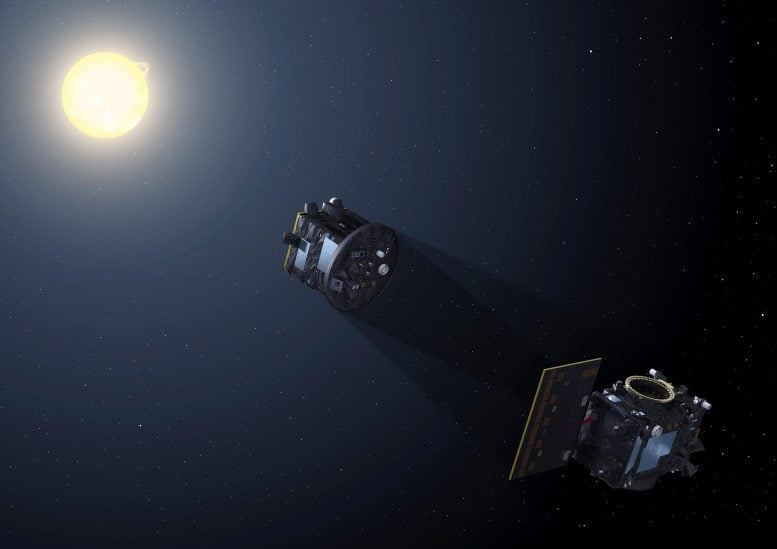
Due to launch together in 2024, the two satellites making up Proba-3 will fly in precise formation to form an external coronagraph in space, one satellite eclipsing the Sun to allow the second to study the otherwise invisible solar corona. Credit: ESA-P. Carril
Mission Strategy and Challenges
Progressing on to the Royal Observatory of Belgium in Brussels, the team went on to discuss preparations for the mission in Brussels, including plans to process and distribute its data, plan co-observations with other space missions, and assess Proba-3’s relative performance compared to existing ‘coronagraph’ instruments employed for coronal observations.
These are telescopes that incorporate internal occulting discs to obscure the solar disc. The problem is that these internal occulters still experience light spilling around their edges, known as diffraction, blotting out the extremely faint signals of interest.
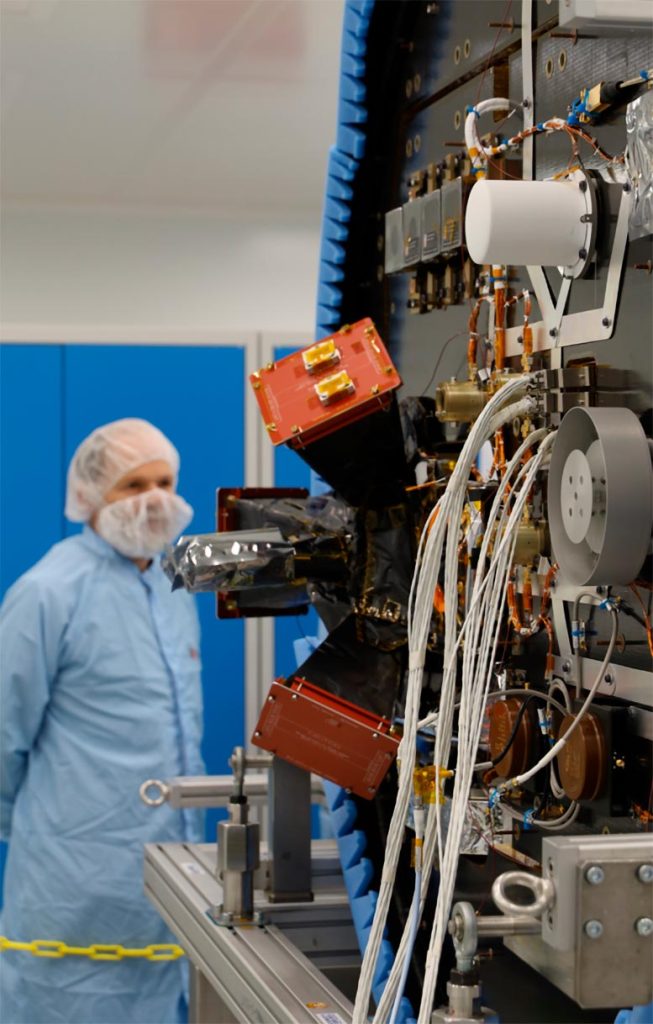
ESA Proba-3 scientist Joe Zender inspects the Coronagraph spacecraft with its carefully-machined circular edge hidden by a protective edge. Credit: ESA-J. Versluys
Damien Galano, ESA’s Proba-3 project manager notes: “The best way to reduce diffraction is to increase the distance between the occulter and the coronagraph, which is precisely what Proba-3 is going to do. We are flying our Coronagraph and Occulter on separate platforms for the first time, flying 150 m apart for up to six hours per orbit, applying an array of positioning technologies to keep them rigidly in place.”
By definition, full-scale end-to-end testing of Proba-3 is impossible here on Earth. But the meeting heard how the same set of filter wheels developed for Proba-3’s ASPIICS (Association of Spacecraft for Polarimetric and Imaging Investigation of the Corona of the Sun) will be used to observe the solar eclipse over Northern America on 8 April 2024, along with a parallel liquid crystal imaging technology.
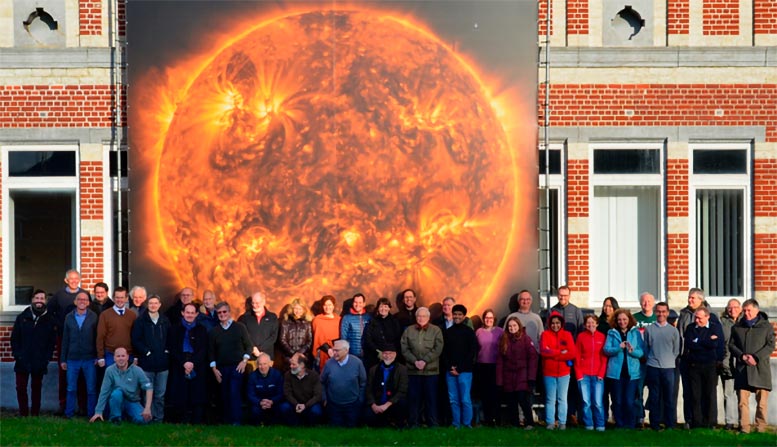
Proba-3’s 45-strong Science Working Group gathered at the Royal Observatory of Belgium. Credit: ESA-J. Versluys
Scientific Goals and Instruments
“The filter wheels allow observation of the corona in different polarisation angles, like switching between different polarised sunglasses,” adds Joe. “The nice about observing during an actual eclipse is we won’t need any occulter, to gain insight of exactly the kind of results we are going to get back from Proba-3.”
The Science Working Team also discussed Proba-3’s second instrument, the Digital Absolute Radiometer, DARA, which will measure the total solar irradiance – exactly how much the energy the Sun is putting out at any one time.
“Assuming the Sun’s output’s influences Earth’s climate, it’s important to measure any variations as precisely as we can,” notes Joe.
Proba-3 is due for launch in September this year, by PSLV launcher from India.

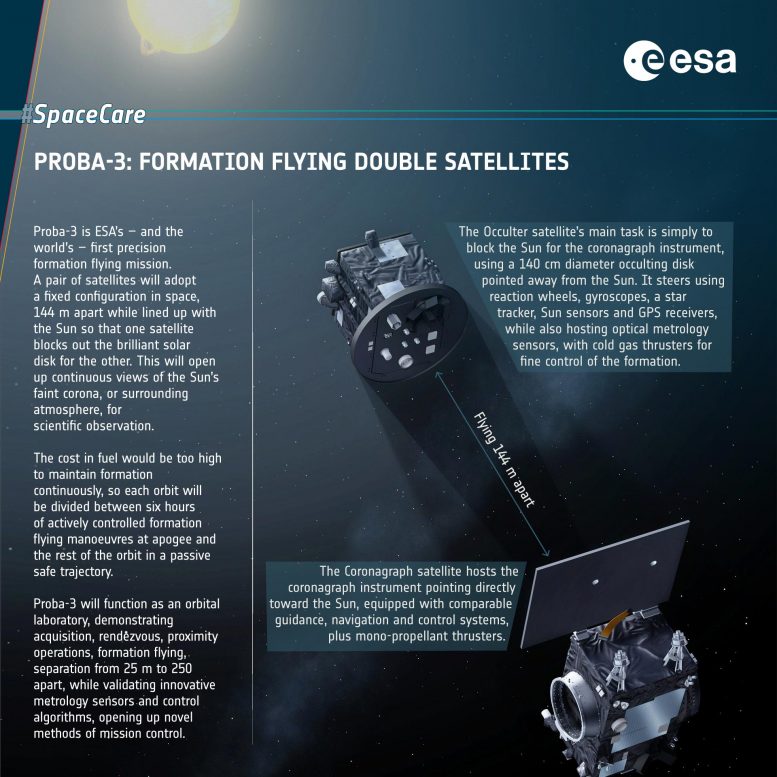
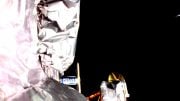
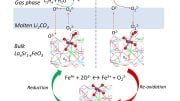

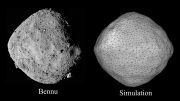


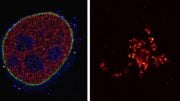
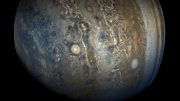
Be the first to comment on "Behind the Cosmic Veil: Proba-3’s Pioneering Solar Eclipse Technology"